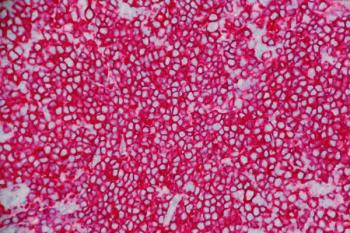
Cancer-Related Deaths in China Largely Avoidable
Nearly 1 million cancer deaths in China were the result of exposure to modifiable risk factors.
Findings from a new study published by the Annals of Oncology suggest that numerous cancer-related deaths among individuals living in China are avoidable.
In 2013, the authors found that more than half of cancer deaths in men and more than one-third of cancer deaths in women in the country could have been avoided. These avoidable deaths were related to modifiable risk factors, such as smoking, alcohol, nutrition, weight, and
The authors said that these findings provide evidence that public health initiatives that eliminate or reduce modifiable
Cancer is the leading cause of death in China, with 2.8 million occurring annually. While cancer burden in America is known to be declining, it is expected to remain high in China due to the aging population, excessive calorie intake, and lack of exercise, according to the authors.
To explore this issue, the authors estimated the number of cancer deaths and cases attributable to smoking, second-hand smoke, alcohol consumption, low fruit and vegetable intake, excess body weight, physical inactivity, and infections in China. The investigators used contemporary data from surveys and cancer registries, according to the study.
The researchers found that 52% of cancer deaths in men and 35% of cancer deaths in women were attributable to the risk factors. Approximately 47% of cancer cases in men and 28% in women in 2013 were related to these factors.
Among all patients, there were nearly 1 million cancer deaths and 39% of cancer cases attributable to the risk factors, according to the study.
“Our analysis likely underestimates the number of cancers attributable to modifiable risk factors because we were not able to include all potentially modifiable risk factors, notably indoor air pollution from using coal for cooking and heating, which is a major risk factor for lung cancer in women in China,” said lead researcher Farhad Islami, MD, PhD.
The greatest number of cancer deaths in men were related to smoking at 26%, followed by infection with the hepatitis B virus (HBV) at 12% and low intake of fruits and vegetables at 7%, according to the study.
For women, 7% of cancer deaths were related to HBV, while low intake of fruits and vegetables and secondhand smoke caused 6% and 5% of the deaths, respectively, according to the study.
“Our analysis likely underestimates the number of cancers attributable to modifiable risk factors because we were not able to include all potentially modifiable risk factors, notably indoor air pollution from using coal for cooking and heating, which is a major risk factor for lung cancer in women in China,” Dr Islami concluded.
Newsletter
Stay informed on drug updates, treatment guidelines, and pharmacy practice trends—subscribe to Pharmacy Times for weekly clinical insights.














































































































































































































